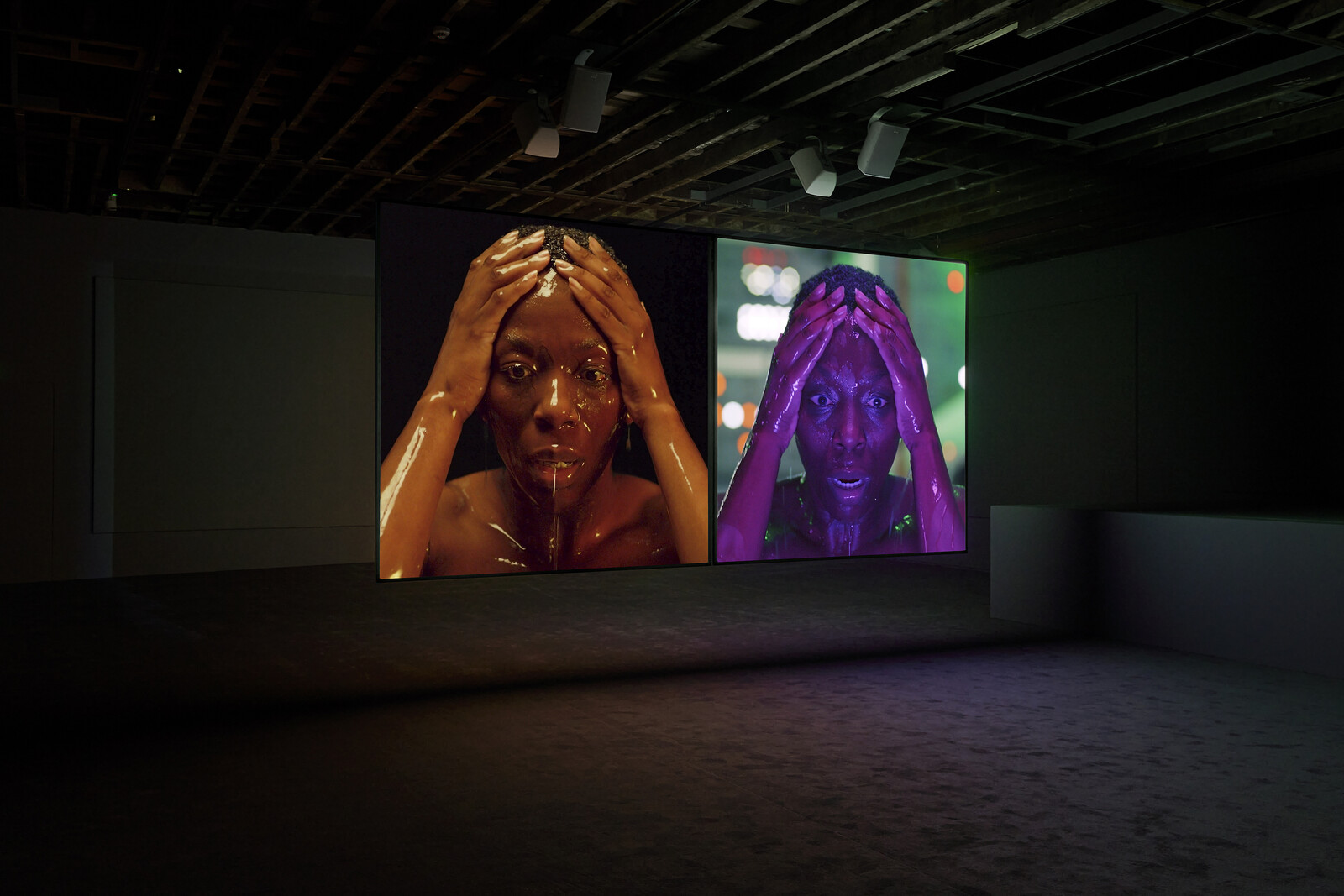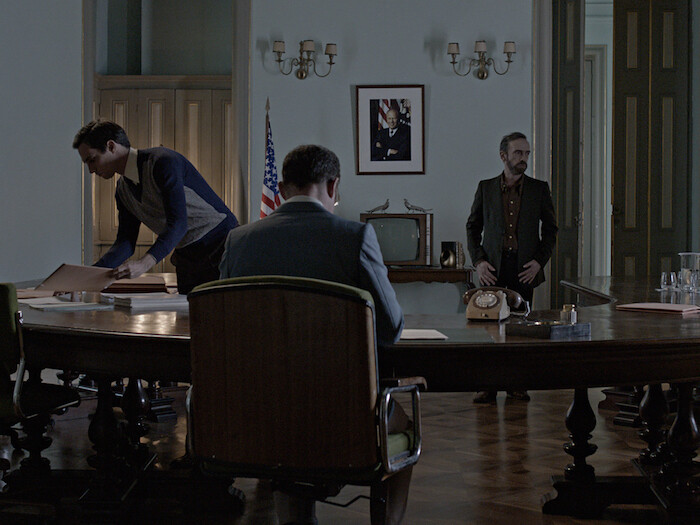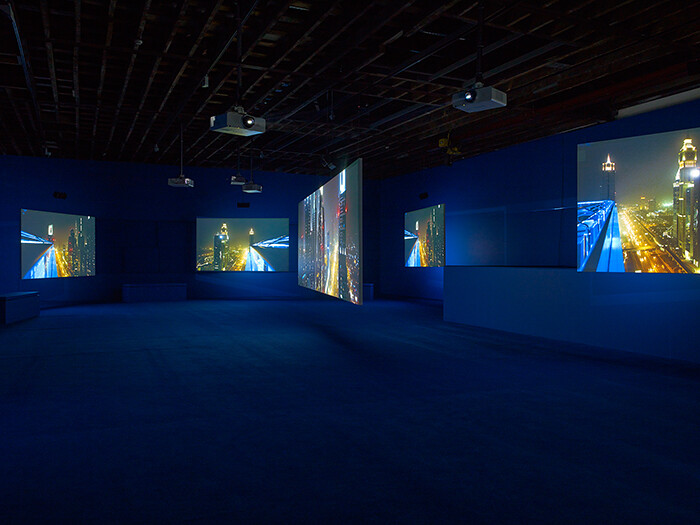Categories
Subjects
Authors
Artists
Venues
Locations
Calendar
Filter
Done
March 10, 2020 – Review
Stan Douglas’s “Doppelgänger”
Kevin Brazil

A thread linking Stan Douglas’s work across various media—installation, film, television—is the creation of what he has called “speculative histories.” Take “Scenes from the Blackout” (2017), a series of large photographs on display downstairs at Victoria Miro’s north London outpost. One photograph (Skyline) shows a blacked-out Manhattan skyline; another (Jewels) a hand stealing diamonds. Elaborately staged, lit with spotlights, and shot from high angles as if by a movie camera, this alternative history of a New York power cut is produced by manipulating the formal artifice of photography as a medium.
This same impulse has produced the main work in the show, the film installation Doppelgänger, which premiered at the Venice Biennale in 2019 and which is projected onto two square screens hanging side by side from the upstairs gallery’s ceiling (in another of its many doublings, it was also exhibited concurrently at David Zwirner, New York until February 22). Doppelgänger is set in an alternative recent past with futuristic yet analogue technology, where typewritten messages are transmitted in metal boxes. One screen tells the story of an astronaut called Alice (call her Alice-1) who is simultaneously cloned and teleported to a spaceship in another galaxy. Her race is …
February 23, 2016 – Review
Stan Douglas’s "The Secret Agent"
Pedro Neves Marques

November 25, 1975 marked the beginning of the end of Portugal’s Processo Revolucionário em Curso (Ongoing Revolutionary Process). This brief socialist experiment, which began with the Carnation Revolution of April 25, 1974, marked the attempt by an alliance between the military, workers’ unions, and political movements to free the country from its economic monopolies by supporting communes, land reform, the collective control of industry, and participatory projects in housing and other areas of society. After the turmoil of the “hot summer” of 1975—featuring bombings of the offices of leftist political parties, a siege of the constitutional assembly by workers, and November’s anti-communist counter coup—the moderate left finally managed to block the movement, opening the way for the inclusion of Portugal in the capitalist market economy of the European Union.
Stan Douglas’s new video installation The Secret Agent (2015) is set amidst the political intrigue of this “hot” period, though it is inevitable—in the wake of the 2015 Portuguese elections that pushed the centrist Socialists to make a historic deal with the Communist Party and the Left Bloc—that it resonates with contemporary ideological shifts. The film—a 50-minute loop displayed on a six-channel projection, three on each opposing wall on an otherwise dark …
February 10, 2014 – Review
Isaac Julien’s “PLAYTIME”
Omar Kholeif

The cornerstone of Isaac Julien’s new exhibition in London is PLAYTIME (2014), a seven-screen, high-definition video installation that features well-known actors James Franco, Maggie Cheung, and Mercedes Cabral, as well as Swiss auctioneer Simon de Pury. Set across three continents, the work follows a suite of characters—the Artist, the Hedge Fund Manager, the Auctioneer, the House Worker, the Art Dealer, and the Reporter—who each occupy distinct chapters. Introducing an episodic structure into the piece are Julien’s choice of locations—the cities of London, Reykjavik, and Dubai—which function allegorically; they were all selected because, it is argued, they are somehow uniquely defined by their relationship to capital.
PLAYTIME operates much like an out-of-sync travelogue. It traces characters as they push and pull at the fragile building blocks that compose contemporary capitalist society. De Pury, playing himself, proffers the most captivating performance. He recounts, with a mixture of anguish and fervor, the adrenaline and subsequent depression that consumes him before and after an auction. Julien’s camera corners de Pury—so close that we can feel him sweat and pulse—and his figure splits across the large central screen at the same time that it is mirrored, his image becoming a doppelgänger of himself. Could this be …